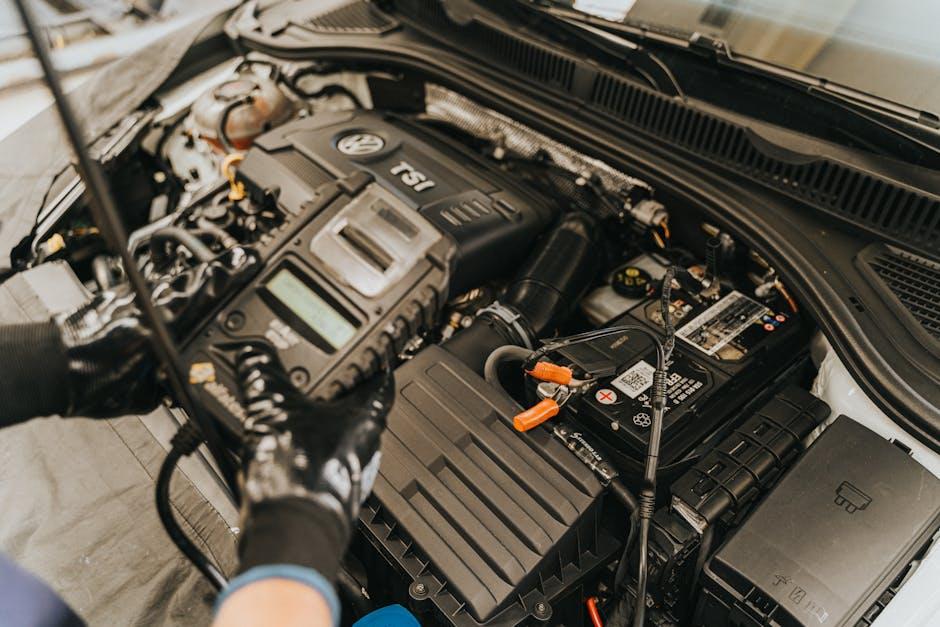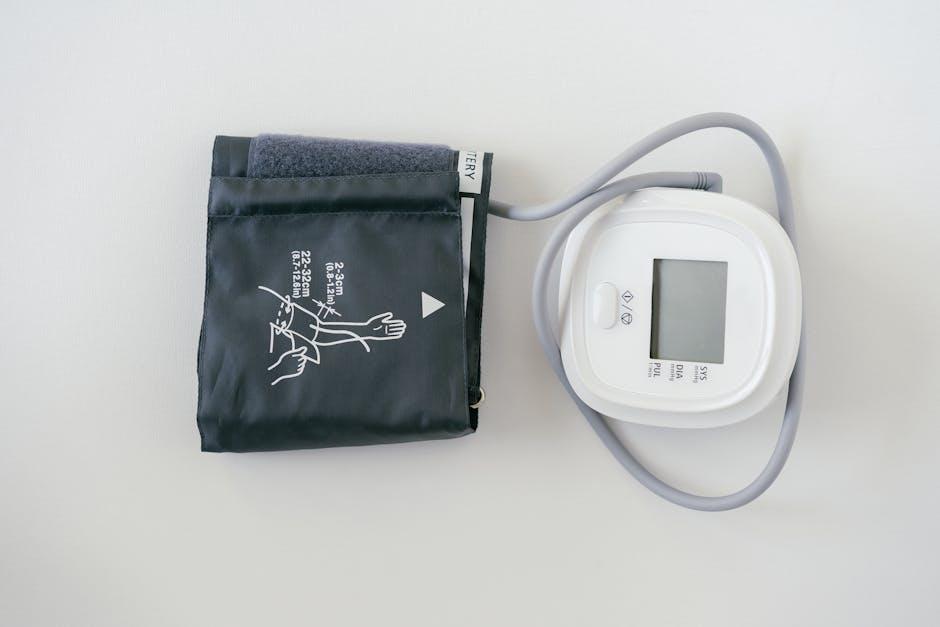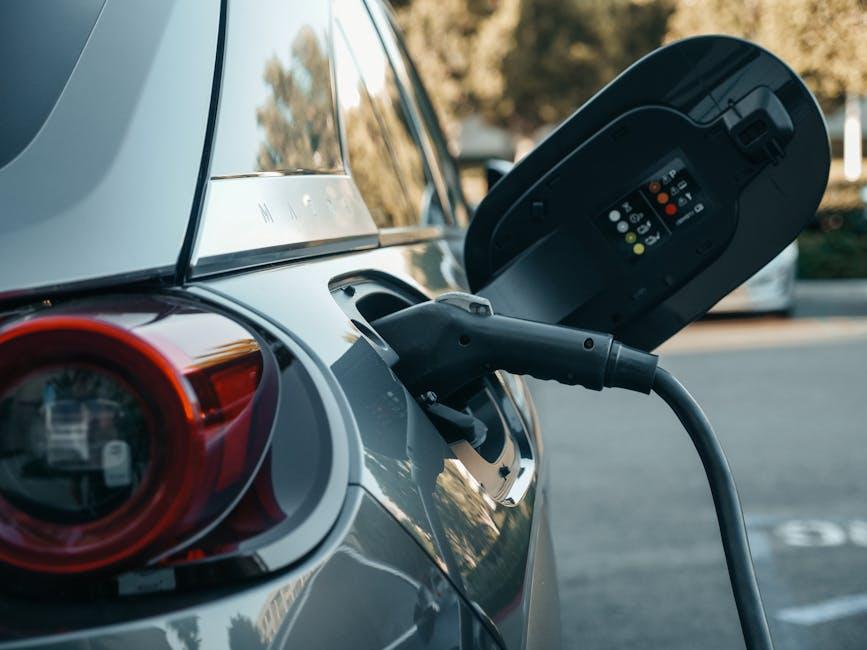Your car’s battery is the silent powerhouse that kicks life into your engine every time you turn the key. Yet, like all things that work tirelessly behind the scenes, it has a lifespan that eventually runs out. Knowing when to replace your car battery isn’t just about avoiding the inconvenience of a no-start situation—it’s about ensuring reliability, safety, and peace of mind on the road. In this article, we’ll explore the signs that signal it’s time to bid farewell to your old battery, helping you stay ahead of unexpected breakdowns and drive with confidence.
Table of Contents
- Signs Your Car Battery Is Nearing the End of Its Lifespan
- Environmental Factors That Affect Battery Performance and Longevity
- How to Perform a Simple Battery Health Check at Home
- Choosing the Right Replacement Battery for Your Vehicle Type
- The Importance of Professional Testing Before Replacement
- Tips for Extending Your New Car Battery’s Life Through Maintenance
- Q&A
- Closing Remarks

Signs Your Car Battery Is Nearing the End of Its Lifespan
When your vehicle begins to show subtle signs of electrical struggle, it’s often a silent alarm that the battery’s vitality is waning. You might notice the engine turning over slower than usual or dimmer headlights during ignition. Another telltale signal is the dashboard warning lights flickering erratically or glowing with unusual intensity. These indicators, although easily overlooked, are your car’s way of signaling that the power source is no longer as robust, and the time to consider a replacement is approaching.
Keeping an eye on these practical clues can save you from unexpected inconveniences. Watch out for:
- Frequent jump-starts: If you find yourself needing external power boosts regularly, your battery’s efficiency has likely dropped.
- Corroded battery terminals: Visible rust or build-up can hinder electrical contact and shorten battery life.
- Swelling or bloating: A physically distorted battery casing is a red flag signaling internal damage.
- Old age: Most batteries last around 3 to 5 years; surpassing this window means reliability decreases considerably.
| Symptom | Possible Problem |
|---|---|
| Slow engine crank | Weak battery charge |
| Electrical issues | Voltage dropping under load |
| Check engine light | Battery/alternator malfunction |
| Frequent jump starts | Battery aging |

Environmental Factors That Affect Battery Performance and Longevity
Battery performance is heavily influenced by the environment where your vehicle is primarily used and stored. Extremes in temperature—both scorching heat and freezing cold—can accelerate the degradation of battery cells. High heat increases chemical reactions inside the battery, causing fluids to evaporate faster and reducing capacity. Conversely, cold weather thickens the battery’s electrolyte, leading to slower chemical reactions and diminished cranking power. Humidity and exposure to corrosive elements like road salt can further deteriorate the battery terminals, reducing connectivity and overall efficiency.
Here’s a quick look at how some key environmental factors play a role in battery health:
- Temperature fluctuations: Constant swings from hot to cold stress the battery more than steady conditions.
- Humidity levels: High moisture can promote corrosion on terminals, leading to electrical issues.
- Vibration and rough terrain: Can loosen internal components and damage the battery casing.
- Storage location: Batteries stored in garages vs. outdoors experience vastly different aging rates.
| Environmental Factor | Impact on Battery | Suggested Care |
|---|---|---|
| Extreme Heat | Accelerates electrolyte evaporation | Park in shade, use heat shields |
| Extreme Cold | Reduces cranking power | Use battery warmers or insulated covers |
| High Humidity | Promotes corrosion | Clean terminals regularly |
| Vibration | Loosens internal parts | Ensure secure mounting |

How to Perform a Simple Battery Health Check at Home
Checking your car battery’s health doesn’t require a trip to the mechanic. Start by giving the battery terminals a quick visual inspection for any corrosion or buildup, which can hinder performance. Next, ensure your car’s lights and electronics respond as expected when turning the key—dimming headlights or slow dashboard lights can be your first red flag. Another easy technique is to listen closely when starting your vehicle; a sluggish engine crank often signals declining battery strength.
For a more precise assessment, use a multimeter to measure the battery voltage. A fully charged car battery should read around 12.6 volts or higher when the engine is off. If the voltage drops below 12.4 volts, it’s time to start considering a replacement to avoid unexpected breakdowns. Here’s a quick reference guide for battery voltages:
| Battery Voltage | Condition |
|---|---|
| 12.6 V or higher | Healthy, fully charged |
| 12.4 – 12.6 V | Moderately charged |
| 12.0 – 12.4 V | Partially charged, check soon |
| Below 12.0 V | Discharged, replace recommended |

Choosing the Right Replacement Battery for Your Vehicle Type
When selecting a replacement battery, it’s crucial to consider the specific energy demands and compatibility with your vehicle. For example, smaller cars typically require batteries with lower cold cranking amps (CCA), while larger SUVs or trucks need batteries that can handle higher power output to support bigger engines and additional electrical systems. Always check the recommended specifications in your owner’s manual or consult with a professional to avoid choosing a battery that is underpowered or oversized for your model.
Key factors to keep in mind include:
- Battery size and terminal placement for proper fit
- Cold Cranking Amps (CCA) suited to your climate and engine size
- Reserve capacity for prolonged power support
- Brand reliability and warranty period
| Vehicle Type | Recommended CCA | Battery Size Group |
|---|---|---|
| Compact Cars | 400-600 | 24, 35 |
| Sedans & Mid-Size Vehicles | 500-700 | 35, 48 |
| SUVs & Trucks | 700-900+ | 48, 65, 75 |

The Importance of Professional Testing Before Replacement
Before rushing to replace your car battery, it’s essential to get a professional assessment to truly understand its condition. Many symptoms like slow engine crank, dim lights, or frequent jump-starts might not necessarily indicate a dead battery; sometimes, the problem lies in the charging system or electrical connections. A trained technician uses specialized tools such as load testers and conductance testers to measure the battery’s health accurately, ensuring that you don’t invest in a new battery prematurely. This approach saves you both money and the hassle of unnecessary replacements.
Professional testing also helps in pinpointing the exact type and capacity of battery your vehicle requires, which is critical for optimal performance and longevity. Below is a quick comparison table illustrating the benefits of professional testing:
| Aspect | Without Professional Testing | With Professional Testing |
|---|---|---|
| Accuracy of Diagnosis | Guesswork based on symptoms | Precise health assessment |
| Cost Efficiency | Possible unnecessary replacement | Avoids wasteful spending |
| Battery Longevity | Might choose inappropriate battery | Selects correct battery type and size |
- Ensures your vehicle’s electrical system remains reliable
- Prevents unexpected breakdowns
- Offers peace of mind with expert advice

Tips for Extending Your New Car Battery’s Life Through Maintenance
Keeping your car battery in top shape doesn’t just happen by chance; it requires a thoughtful approach to maintenance. Start by regularly cleaning the battery terminals to prevent corrosive buildup, which can impede the electrical connection. Use a mixture of baking soda and water with a soft brush to gently scrub the terminals, then rinse and dry thoroughly. Additionally, ensure all battery connections are tight and secure—loose cables lead to inconsistent power delivery and premature battery wear. Don’t forget to inspect the battery case for cracks or bulges, signs of internal damage that warrant immediate attention.
Another effective strategy is to keep your battery charged, especially if your vehicle is parked for an extended period. Consider investing in a smart charger or trickle charger designed to maintain the battery’s charge without overloading it. Monitoring the electrical system by testing the battery’s health each season can also identify early warning signs of failure. Below is a quick guide for routine checks you can follow:
| Maintenance Task | Frequency | Purpose |
|---|---|---|
| Terminal Cleaning | Every 3-6 months | Prevents corrosion and maintains conductivity |
| Voltage Check | Annually or before winter | Ensures battery health and charge level |
| Cable Tightening | Every oil change | Prevents power interruptions |
| Battery Case Inspection | Monthly | Detects physical damage early |
Q&A
Q&A: When to Replace Your Car Battery
Q1: How do I know if my car battery is failing?
A1: Common signs include slow engine crank, dim headlights, and the check engine or battery warning light turning on. If your electronics start acting up or your car struggles to start on cold mornings, it’s time to check the battery health.
Q2: Is there a typical lifespan for car batteries?
A2: Generally, car batteries last between three to five years. However, extreme weather, driving habits, and battery quality can shorten or extend this range.
Q3: Why does climate affect battery life?
A3: Heat can accelerate battery fluid evaporation and internal corrosion, shortening life. Cold weather, meanwhile, reduces a battery’s ability to hold a charge, making it work harder during startups.
Q4: Can I test my battery myself, or do I need a professional?
A4: You can perform a basic voltage test with a multimeter—healthy batteries should read about 12.6 volts when the engine is off. For a more thorough analysis, professional load testing at a service center is recommended.
Q5: Will leaving lights on drain my battery completely?
A5: Yes, leaving lights or other electrical components on when the engine is off can fully drain the battery, potentially damaging it and requiring replacement sooner.
Q6: Does frequent short-distance driving affect battery health?
A6: Yes. Short trips often don’t allow the alternator enough time to recharge the battery fully, which can lead to premature battery wear.
Q7: What should I do if my battery is near the end of its life?
A7: Consider replacing it proactively before it fails. Sudden battery failure can leave you stranded and may cause additional strain on your vehicle’s electrical system.
Q8: Are there different types of batteries with varying lifespans?
A8: Yes. Conventional lead-acid batteries are common and affordable but may have shorter lifespans. AGM (Absorbent Glass Mat) batteries offer better performance and durability but come at a higher cost.
Q9: How can I extend the life of my car battery?
A9: Regular driving to keep it charged, minimizing short trips, turning off electrical accessories when not in use, and keeping terminals clean can all help prolong battery life.
Q10: Is replacing a car battery a DIY task?
A10: It can be, if you’re comfortable with basic tools and safety precautions. However, incorrect handling can cause damage or injury, so many prefer professional replacement.
Understanding when to replace your car battery is key to avoiding unexpected breakdowns and keeping your vehicle running smoothly. Watch for the signs, test regularly, and don’t hesitate to act when it’s time.
Closing Remarks
Knowing when to replace your car battery is less about luck and more about understanding the signs your vehicle gives you. By staying attentive to subtle changes—like slower engine cranks, dimmer lights, or that stubborn start on chilly mornings—you can avoid unexpected breakdowns and keep your journeys smooth. Remember, a well-timed battery replacement isn’t just a maintenance task; it’s a small investment in peace of mind and reliability. So, listen to your car’s signals, plan ahead, and hit the road with confidence.

